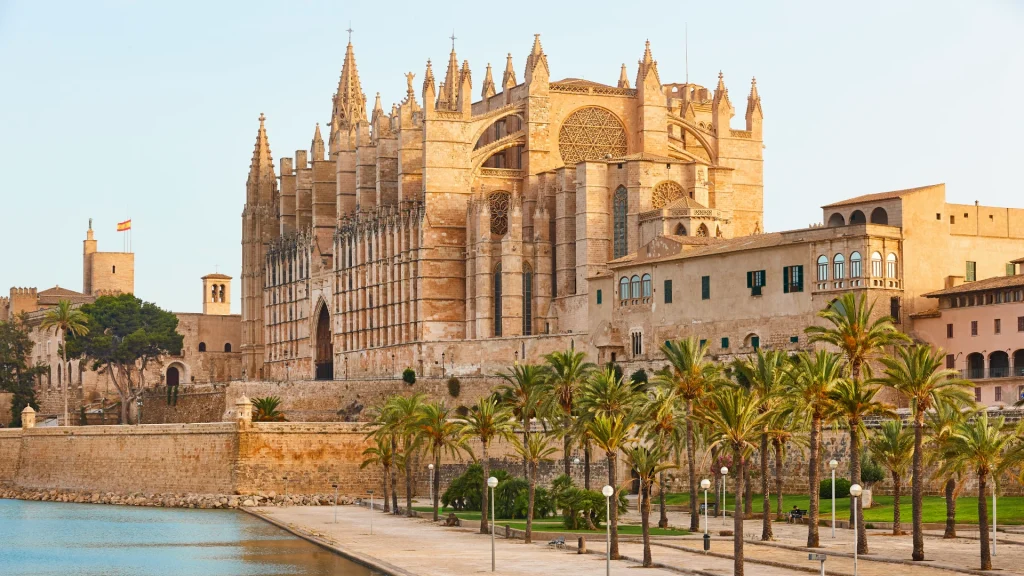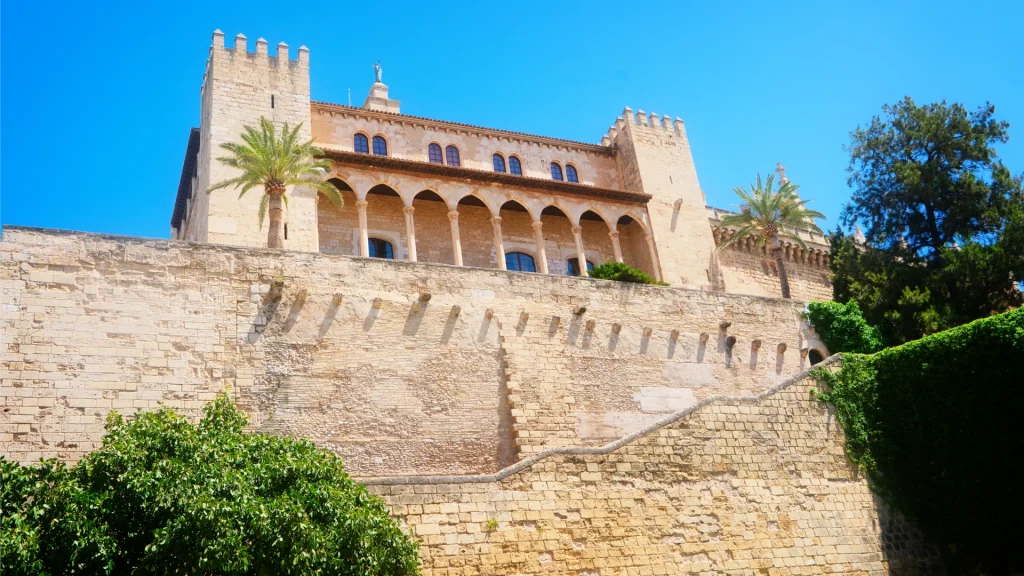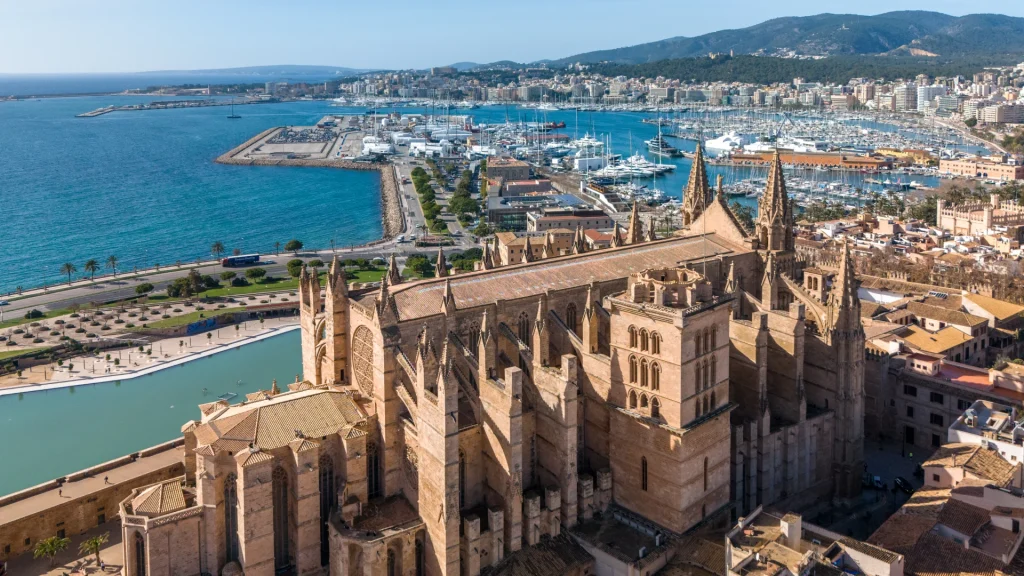Palma de Mallorca: A City Carved in Stone, Shadow, and Salt
Most visitors land in Palma de Mallorca chasing the promise of a postcard: turquoise beaches, chilled drinks, and sunsets filtered through sunglasses and Instagram presets. But beneath this sun-drenched mirage — as seductive as it is superficial — lies a city that doesn’t sleep under its history. It wears it like a second skin.
Palma is not just Europe’s screensaver. It is a living palimpsest. A mosque becomes a cathedral. A hammam hides behind orange trees. A Gothic trade hall is now a sanctuary for modern art. Welcome to a city where the past and present coexist like ex-lovers: they no longer speak, but they still recognize each other in the hallway.
The Cathedral of Palma: Gothic Majesty with a Modern Pulse

It rises by the sea as if guarding the horizon from old foes or new influencers. The Cathedral of Palma — known locally as La Seu — stands like a sandcastle that petrified before the tide could claim it. Built between the 13th and 17th centuries atop a former mosque (ironic twist or strategic architecture?), it’s a towering testament to the Catalan Gothic style.
But this isn’t just a fossil of faith. Inside, Antoni Gaudí left his idiosyncratic fingerprints, and contemporary artist Miquel Barceló added a startling ceramic mural — part cave, part cosmic vision. With flying buttresses, stained-glass rosettes, and sacred reinvention, this cathedral doesn’t just remember Palma’s history. It continues to become it.
The Royal Palace of La Almudaina: Where Cultures Collide and Kings Still Visit

Next door stands the Royal Palace of La Almudaina, which still bears its Arabic name like a scar — or a tattoo, depending on your point of view. Originally a Muslim fortress, it was repurposed as a royal residence after the Christian conquest of 1229. Its walls are a textbook of contradictions: horseshoe arches meet Gothic chapels, Andalusian patios neighbor regal salons.
Still used today for official ceremonies, the palace is part museum, part throne room. Walking through it is like flipping through a family photo album where some faces have been redacted, but the eyes still tell the story.
La Lonja: Where Commerce Wore a Halo

When merchants ruled the Mediterranean, money had its cathedral too. La Lonja, built between 1426 and 1448 by architect Guillem Sagrera, is a masterpiece of civil Gothic architecture — elegant, austere, and strangely hypnotic. Its twisted columns look like stone vines stretching toward a heaven of trade and treaties.
Though it no longer hosts merchants peddling silks and spices, it now houses exhibitions and cultural events. The air smells more of varnish than salt these days, but La Lonja still echoes with the ambition that once shaped empires.
The Arab Baths: Steam from a Forgotten World

Tucked away in the Can Serra district, the Arab Baths are like a whisper hidden in the roar of modern tourism. Modest, secretive, and serene, they are among the few surviving remnants of Madina Mayurqa — the Islamic city that once stood where Palma now bustles.
Built in the 10th or 11th century, the central chamber remains a marvel: a dome pierced by star-shaped skylights, filtering light like time drips through memory. Surrounded by citrus-scented gardens, these baths are less a monument than a meditation. Step inside, and you’re not just seeing history — you’re breathing it.
Tips for Getting Wonderfully Lost
– Wear comfortable shoes — history, after all, prefers cobblestones.
– Begin at the Cathedral, then let your instincts guide you.
– Avoid tourist stampedes; go early or wander late.
– Book a guided tour if you want to eavesdrop on the secrets the stones won’t tell.
– Stay central: we recommend Hotel Gloria de Sant Jaume, a beautiful boutique hideaway where past and present sleep side by side. Book directly here: Hotel Gloria de Sant Jaume
Palma: A City of Masks and Mirrors
So what is Palma de Mallorca, really? Roman outpost, Islamic medina, Christian stronghold, maritime hub, beach resort. It’s worn every costume and spoken every language of power. Every stone here has an opinion. Every façade hides a footnote.
To walk Palma’s old town isn’t just to admire beauty — it’s to read the footnotes of Europe’s unfinished story. The city doesn’t beg for your attention. It earns it, slowly, like a book you didn’t expect to love, but can’t put down.
Because Palma isn’t a place to simply see. It’s a place to listen.

